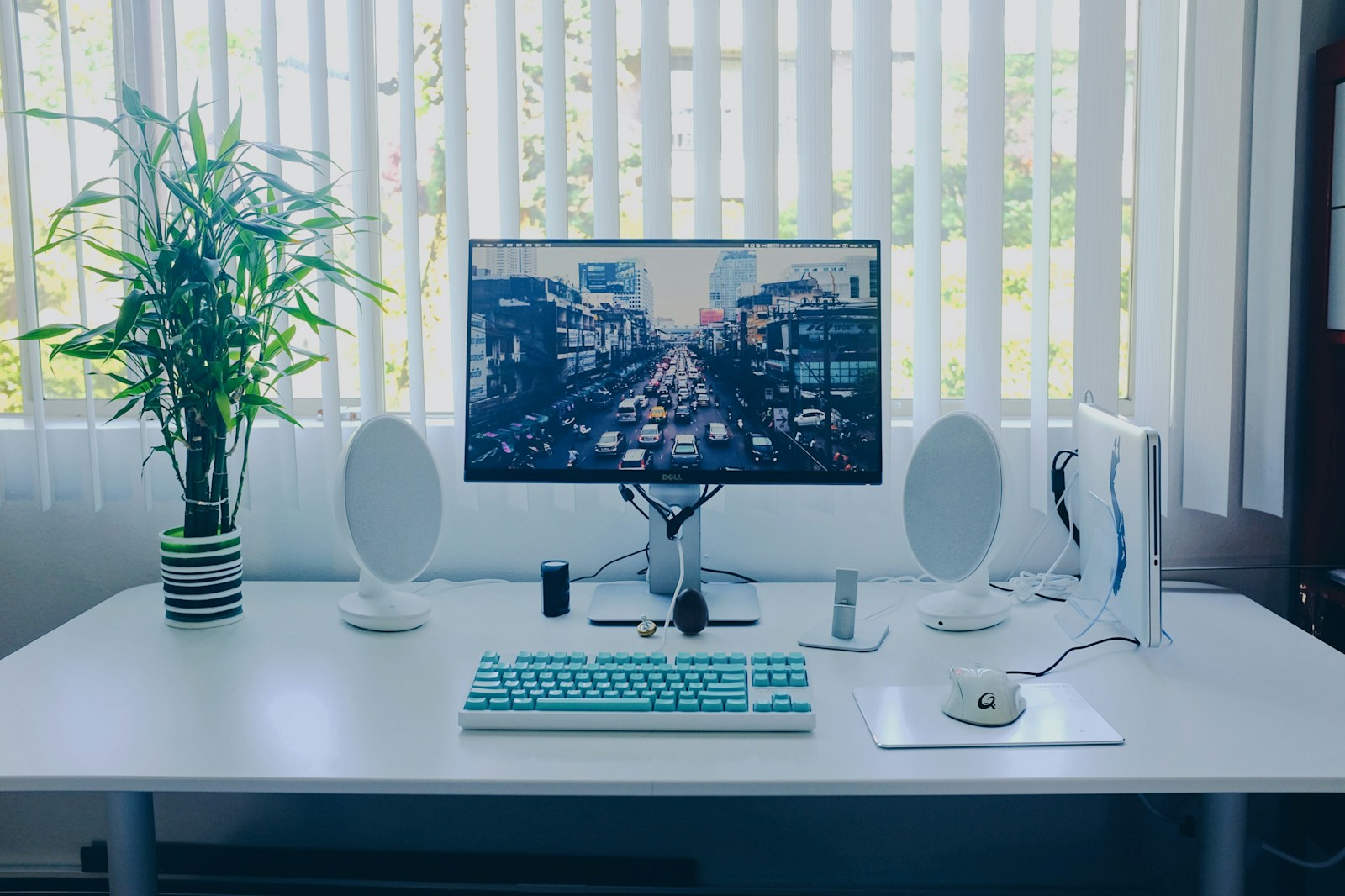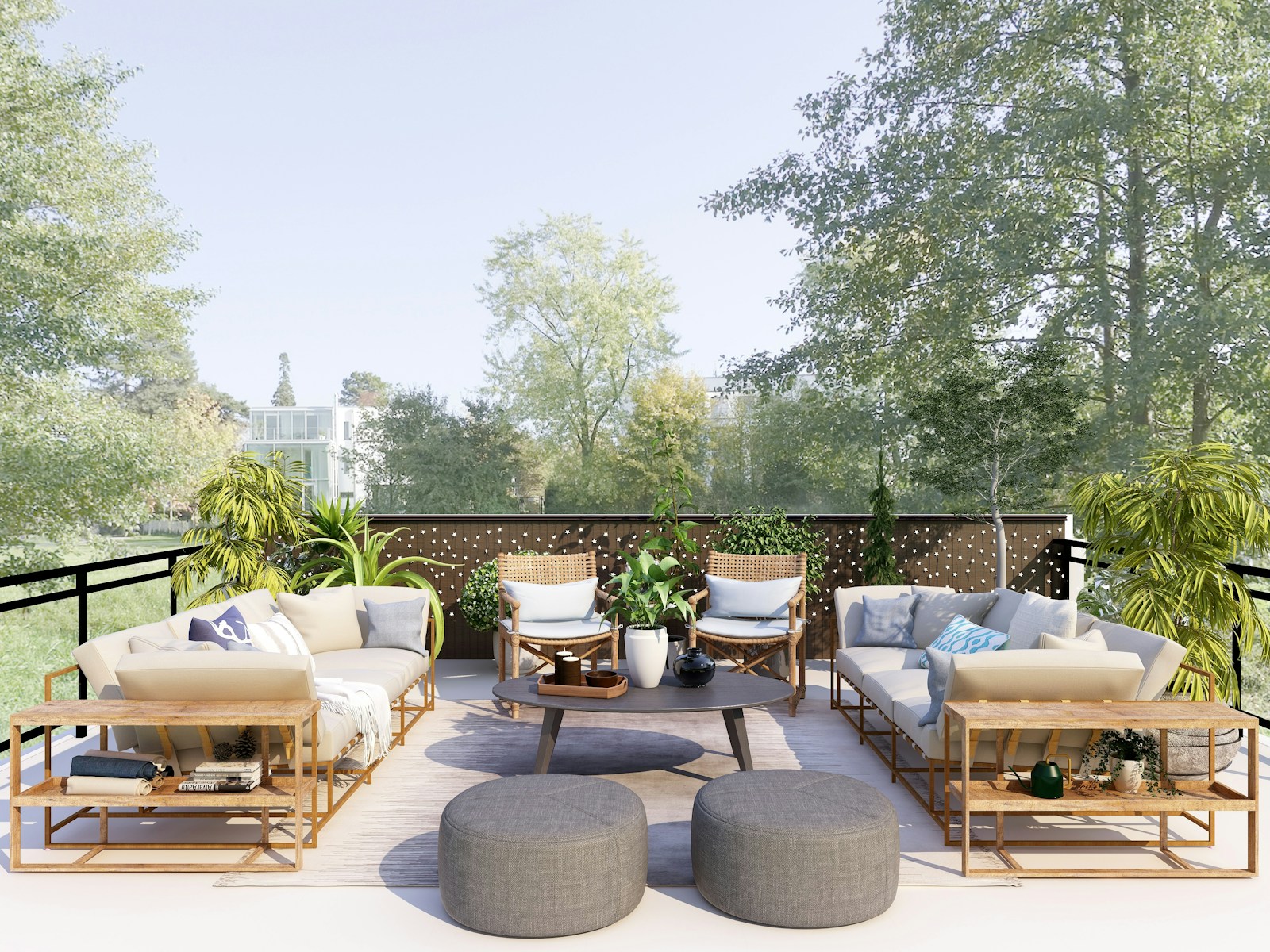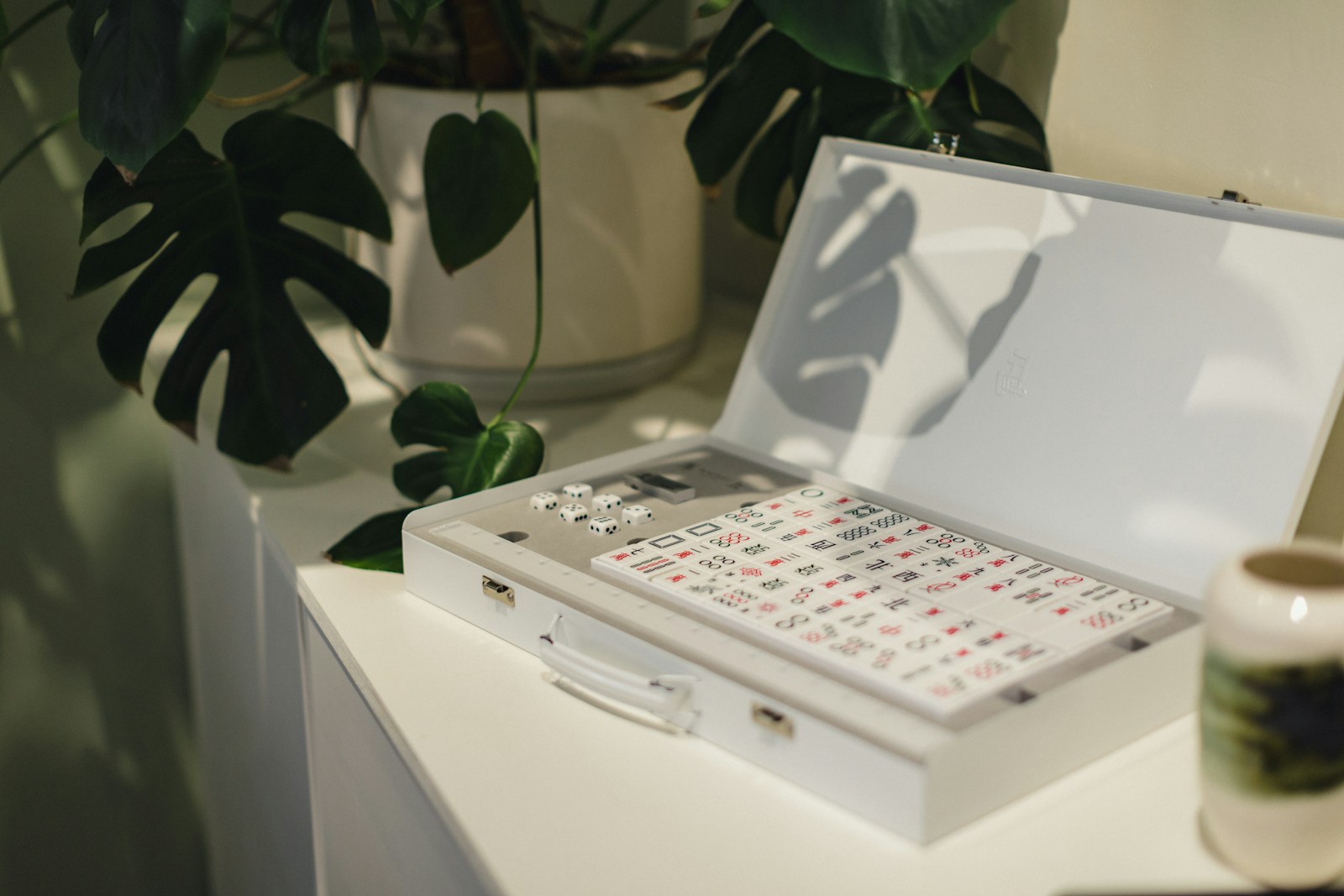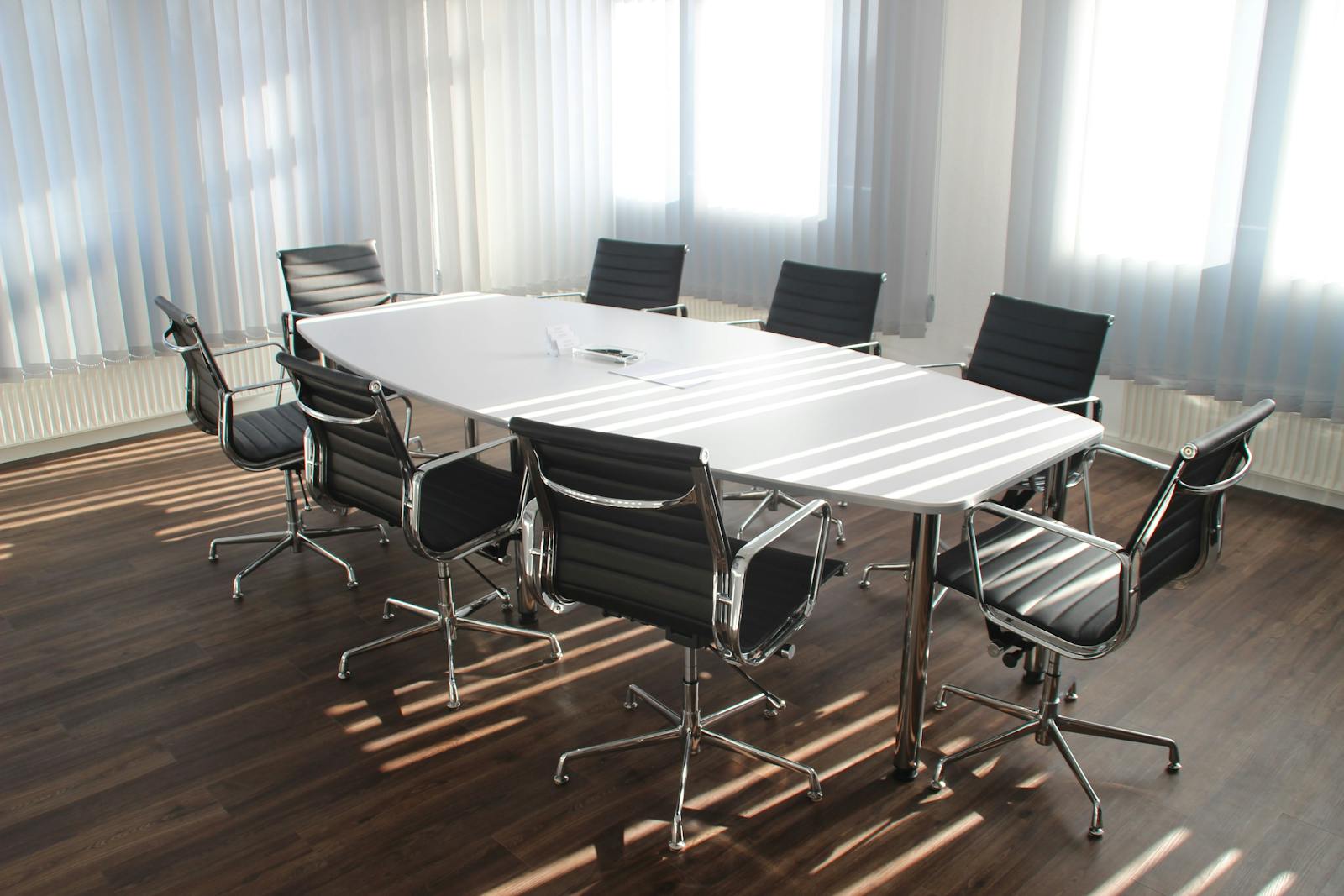Designing the Ideal Computer Table: Tips for Comfort & Style
You know that hunched-over back pain that hits after a marathon work session? 94% of remote workers report physical discomfort from poor workspace setups. I used to be one of them.
Your computer desk is more than mere furniture—it’s the hub of your digital existence. And designing the ideal computer table means finding that sweet spot where ergonomics meets your aesthetic.
In this guide, I’ll walk you through everything from height measurements to cable management solutions that actually work, helping you create a workspace that feels custom-built for your body and style preferences.
But first, let me share the single biggest mistake most people make when selecting a computer table—and why it’s probably costing you more than just comfort.
Ergonomic Essentials for Your Computer Workspace
Finding the Perfect Desk Height to Prevent Strain
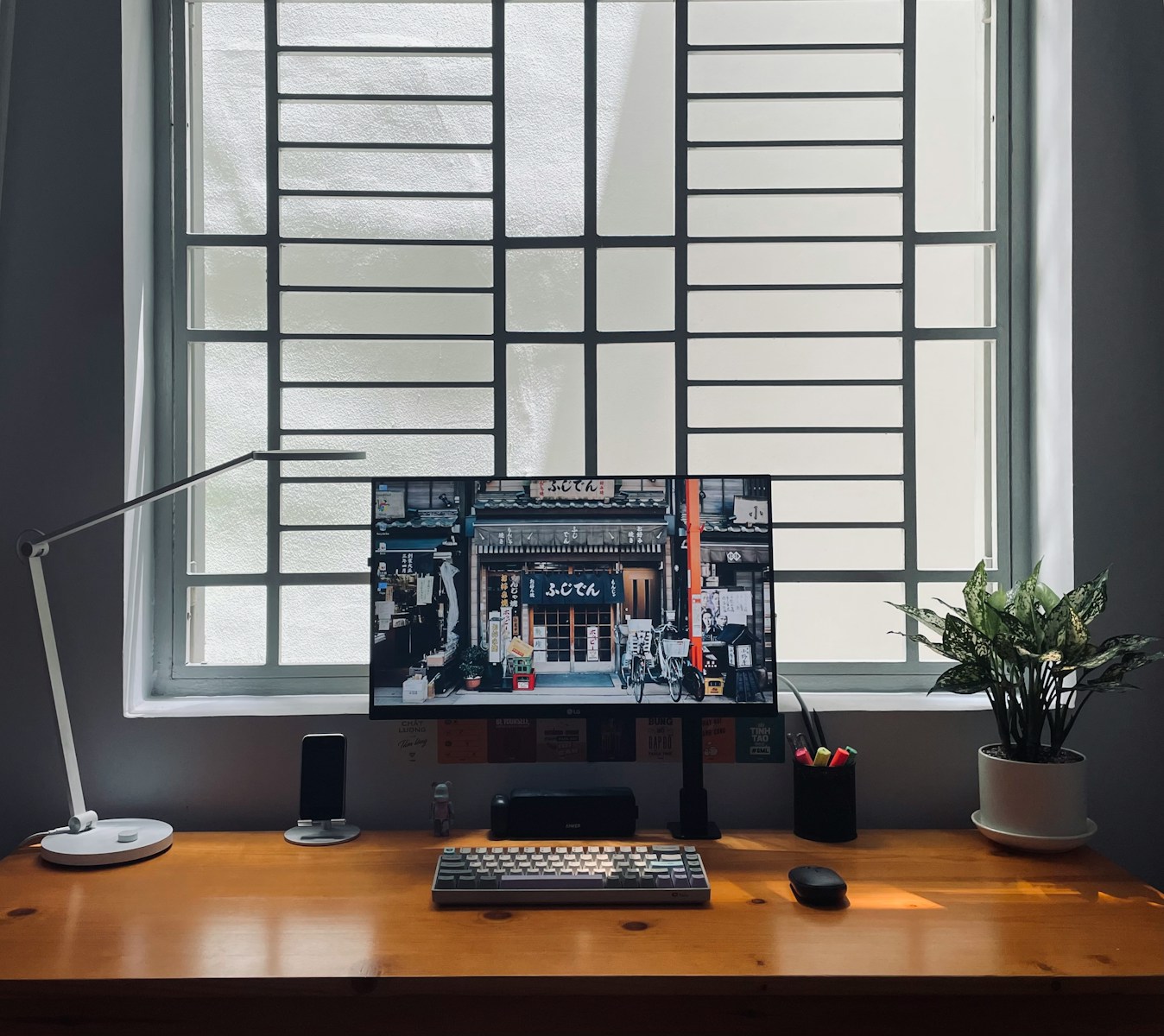
Ever sat at a desk for hours and felt like your back was plotting revenge? That’s what happens when your desk height is all wrong. The sweet spot for most people is having your desk at elbow height when sitting. Your computer desk is more than mere furniture—it’s the hub of your digital existence.
Too high, and your shoulders creep up to your ears. Too low, and you’re hunching over like a question mark. Neither is a good look for your spine.
Your computer desk is more than mere furniture—it’s the hub of your digital existence. But let’s be real – we’re not all standard-sized humans. Adjustable desks are game-changers here. They let you customize the height to your exact needs and even stand when you’re tired of sitting.
Quick test: Sit at your desk with your feet flat on the floor. If your forearms aren’t parallel to the ground when typing, something’s off.
Optimal Monitor Positioning for Reduced Eye Fatigue
Your monitor position could be giving you a literal pain in the neck. The top of your screen should be at or slightly below eye level – about 20-30 inches from your face.
Think about it: when your monitor is too low, you’re constantly looking down (hello, neck strain). Too high, and your neck tilts back unnaturally. Either way, your body hates it.
Multi-monitor users, I see you. Arrange your screens so the one you use most is directly in front, with secondary monitors angled slightly inward on the sides.
And brightness matters too. Your display should not serve as a beacon in a dimly lit space nor should it be hardly discernible in a well-lit environment. Match your monitor brightness to your surroundings to prevent those end-of-day bloodshot eyes.
Keyboard and Mouse Placement for Wrist Health
Carpal tunnel syndrome is a serious condition, and improper keyboard placement is frequently the cause. Your keyboard should sit flat or slightly angled away from you – those fold-out legs that tilt the keyboard toward you? They’re actually doing more harm than good.
Position your keyboard so your wrists remain straight while typing, not bent up, down, or sideways. Your mouse should be right next to your keyboard, not way off to the side making your arm stretch like you’re reaching for the last cookie.
Ever heard of negative tilt? It’s when your keyboard slightly slopes away from you, and ergonomics experts swear by it. If your desk is too high, consider a keyboard tray that mounts underneath.
A good test: if you can slide your hand under your wrist while typing, your wrists are probably floating at the right height.
Creating Space for Proper Posture
The holy grail of desk ergonomics is having enough space to move naturally. Your legs should fit comfortably under your desk with room to cross or stretch occasionally. No bumping knees or getting trapped like sardines.
The ideal sitting position looks like this: feet flat on floor, back against chair, elbows close to body, and screen at eye level. But here’s what many people miss – you need space to shift positions regularly.
Even the perfect posture becomes problematic when held static for hours. Your workspace should allow for movement – whether that’s switching between sitting and standing, stretching your legs, or just fidgeting without knocking things over.
Consider the depth of your desk too. A shallow desk forces you too close to your screen, while one that’s too deep might tempt you to slouch forward.
Cable Management Solutions for a Cleaner Workspace
Nothing ruins a beautiful desk setup faster than a rat’s nest of cables. Beyond the aesthetic nightmare, tangled cords create practical problems – they collect dust, restrict movement, and can even become tripping hazards.
Start with a cable management tray that mounts under your desk. They’re relatively inexpensive and hide the bulk of your cords in one place. Cable clips and sleeves work wonders for keeping individual cords organized and preventing that annoying slip-behind-the-desk problem.
Wireless peripherals have come a long way – modern wireless mice and keyboards have virtually no lag and eliminate two of the most annoying cables on your desk.
Power strips with widely-spaced outlets accommodate those chunky adapter blocks without blocking adjacent outlets. And if you’re feeling fancy, consider a monitor with a built-in USB hub that can reduce the number of cables running to your computer.
Remember, a clean workspace isn’t just about looks – it reduces stress and makes your workspace more functional. That’s a win-win in my book.
Choosing the Right Materials and Build Quality
Wood vs. Metal vs. Glass: Pros and Cons of Different Tabletop Materials
Your computer table’s material isn’t just about looks—it affects everything from durability to how your tech performs. Here’s what you need to know:
Wood Tabletops
- Natural beauty that warms up any space
- Absorbs vibration and noise from typing
- Doesn’t get cold to the touch like metal or glass
- Can be refinished if damaged
- May warp if exposed to moisture or heat
Metal Tabletops
- Incredibly durable—practically impossible to dent
- Heat-resistant (goodbye coffee ring marks!)
- Modern, industrial aesthetic
- Often less expensive than quality wood
- Can feel cold and may create annoying reflections
- Shows fingerprints like nobody’s business
Glass Tabletops
- Creates a floating, airy look that makes small spaces feel bigger
- Super easy to clean—just wipe and go
- Resistant to stains and water damage
- Scratch-prone unless tempered
- Shows dust and fingerprints instantly
- Can create glare issues with monitors
Frame Stability Features to Look For
A wobbly desk is the enemy of productivity. Period. When shopping for your computer table, check for these stability heroes:
- Cross-bracing on the underside
- Adjustable feet for uneven floors
- Triangular support structures where legs meet the tabletop
- Corner brackets that prevent wobbling
- Metal-to-metal connections instead of plastic parts
The best frames have multiple contact points between components. Avoid anything that feels rickety when you give it a gentle shake.
Weight Capacity Considerations for Your Equipment
Think your setup is lightweight? Think again. A typical desktop computer, dual monitors, speakers, and peripherals can easily exceed 50 pounds. And that’s before you lean on it!
Gaming rigs demand even more—those fancy water-cooled towers can hit 30+ pounds alone.
Most decent computer tables support 100-200 pounds, but check the specs. Look for reinforced tabletops and leg designs that distribute weight evenly. The last thing you want is your expensive gear crashing to the floor because you skimped on load capacity.
Surface Treatments That Reduce Glare and Fingerprints
Nothing ruins productivity like screen glare or tables that look dirty five minutes after cleaning.
Matte finishes are your best friend—they diffuse light rather than reflecting it directly into your eyes. Some manufacturers offer anti-glare coatings similar to what’s used on eyeglasses.
For fingerprint resistance, look for:
- Nano-coating technologies that repel oils
- Satin or textured finishes that hide marks better than glossy surfaces
- Melamine-coated particle board that resists staining
- Powder-coated metals that don’t show every touch
These treatments might cost more upfront, but they’ll save you countless hours of cleaning and squinting at reflections.
Space-Saving Designs for Any Room Size
L-Shaped Desks for Corner Optimization
Ever noticed how corners in rooms are often the most underused spots? L-shaped desks fix that problem brilliantly. They wrap around corners, giving you two workspace areas instead of one.
One side for your computer setup, the other for paperwork or creative projects. It’s like getting two desks for the space of one and a half.
The elegance of L-shaped designs lies in their ability to establish distinct areas for various activities. You can swivel your chair between work modes without getting up. Plus, they give you that executive feel without eating up your entire room.
Got a small bedroom or home office? An L-shaped desk tucked into the corner frees up the center of your room for other furniture or just breathing space. Some models even come with built-in shelving at the corner junction, turning wasted space into storage gold.
Floating and Wall-Mounted Options for Tiny Spaces
Wall-mounted desks are the superheroes of tiny apartments. When floor space is limited, utilizing vertical space is a wise decision.
These desks attach directly to your wall, eliminating the need for bulky legs. Many fold up when not in use, transforming from productive workspace to nearly invisible wall fixture in seconds. Perfect for studio apartments or multipurpose rooms.
What I love about floating desks is their visual lightness. Without touching the floor, they create an airy feel that makes small rooms look bigger. The open space underneath is perfect for storing a small filing cabinet, basket, or even your exercise equipment.
Installation isn’t as scary as it sounds. Most come with templates and clear instructions, though you’ll want to make sure you find wall studs for proper support. The payoff? A sleek workspace that doesn’t dominate your limited square footage.
Expandable and Modular Designs That Grow With Your Needs
Remember those transforming robots from the 90s? Today’s modular computer desks work on the same principle – they change to fit your changing needs.
Start with a simple desk module. As your setup grows, add matching extensions, shelving units, or storage components. Certain systems allow for complete reconfiguration, transforming an L-shaped desk into a straight desk or incorporating a return to establish a U-shaped command center.
The smart money is on furniture that adapts. Moving to a bigger place? Add components. Downsizing? Use fewer pieces. Either way, you’re not starting from scratch with each life change.
Many expandable desks feature elements like pull-out keyboard trays, monitor risers that attach or detach, and adjustable shelving. This flexibility means your workspace can evolve with technology changes too – something fixed designs can’t offer.
Storage Solutions to Keep Your Workspace Clutter-Free
A messy desk equals a messy mind. But the right storage solutions built into your computer table can keep chaos at bay.
Drawers are workspace classics for a reason. Deep ones for files, shallow ones for supplies. Look for desks with at least one file-sized drawer if you deal with physical paperwork regularly.
Vertical space is your secret weapon. Hutches that sit on your desk add shelving without increasing footprint. Cable management channels hide the tech spaghetti that accumulates with multiple devices.
Don’t overlook these clever options:
- Keyboard trays that slide away when not needed
- Monitor stands with small drawers underneath
- Pegboard attachments for hanging frequently used items
- Under-desk CPU holders that keep your tower off the floor
- Magnetic strips for metal accessories like scissors and paper clips
The best storage solutions feel intuitive – they put everything you need within arm’s reach but out of sight when not in use.
Style Elements That Complement Your Home Décor
A. Matching Your Computer Table to Existing Furniture
Your computer table isn’t just a functional piece – it’s part of your home’s visual story. When shopping for the perfect desk, take a quick inventory of your existing furniture first.
Do you have a mid-century modern living room characterized by tapered legs and clean lines? A bulky traditional desk with ornate carvings will stick out like a sore thumb. Instead, look for similar wood tones and complementary silhouettes.
The easiest approach? Pick up on existing elements:
- Wood type (oak, walnut, maple)
- Hardware finishes (brass, chrome, black)
- Line styles (curved vs. straight)
- Overall proportions
A simple trick: snap photos of your current furniture and bring them along while shopping. This visual reference helps you avoid that “it looked perfect in the store” disappointment.
B. Color Psychology for Productivity and Focus
Colors influence our emotions and productivity to a greater extent than we often acknowledge. Your desk color choice isn’t just about aesthetics – it affects how you work.
Blue promotes focus and mental clarity – perfect for coders or writers who need sustained concentration. Green reduces eye strain and creates balance – ideal for long work sessions. Yellow sparks creativity but can be overwhelming in large doses.
Neutral tones like white, gray, and natural wood create versatility and timelessness. They’re easy to update with colorful accessories when your taste changes.
The wrong color can actually drain your energy. Bright red might look bold, but it can increase stress during deadline crunches.
C. Contemporary vs. Traditional Design Elements
The eternal style battle: sleek modern minimalism or classic traditional warmth?
Contemporary desks typically feature:
- Clean, straight lines
- Metal and glass components
- Hidden or minimal storage
- Floating or cantilevered designs
- Monochromatic color schemes
Traditional options offer:
- Substantial wooden construction
- Visible craftsmanship details
- Ample drawer storage
- Carved embellishments
- Warmer finish tones
Can’t decide? Transitional designs blend elements from both worlds – the warmth of traditional with the functionality of contemporary. Think clean-lined wooden desks with subtle detailing and streamlined hardware.
D. Lighting Integration for Ambiance and Functionality
Good lighting transforms your workspace from merely functional to genuinely inspiring. The most effective desk arrangements include various layers of lighting.
Task lighting focuses bright, direct light on your work area. Adjustable desk lamps with articulating arms let you position light exactly where needed. LED options with color temperature controls adapt from energizing cool white to relaxing warm tones as your day progresses.
Ambient lighting softens the overall space. Consider:
- Under-desk LED strips creating a floating effect
- Wall sconces providing gentle background illumination
- Smart bulbs programmed to shift throughout your workday
Cable management becomes critical with multiple light sources. Look for desks with built-in cable ports or add aftermarket solutions to prevent the dreaded cord tangle.
E. Personalizing Your Workspace While Maintaining Professionalism
Your desk should reflect your personality without screaming “unprofessional” during video calls. The key is balance.
Personal touches that work anywhere:
- Curated books related to your field
- High-quality desk accessories in coordinating materials
- Artful organization tools (leather catchalls, handcrafted pencil cups)
- A single statement plant (ZZ plants and snake plants require minimal care)
The personalization zone is typically the area behind your screen – visible to you but not your virtual meeting participants. This space can hold more personal items like family photos or inspirational quotes.
Avoid cluttering horizontal surfaces. Each item should earn its desk space through either function or meaningful inspiration. When in doubt, edit down – a thoughtfully curated workspace signals professionalism.
Smart Features for the Modern Computer User
Built-in Charging Stations and Power Management
Gone are the days when a computer table was just a flat surface. Today’s workstations need to handle your power needs without turning into a snake pit of cables. The most innovative computer tables now come with built-in USB ports and power outlets right at the edge of the desk.
Some premium models even offer wireless charging pads embedded into the surface—just place your phone down and watch the battery fill up while you work. No more hunting for that charging cable that somehow migrated to another dimension.
Smart cable management solutions have evolved too. Look for tables with magnetic cable guides, hidden channels, and dedicated power bays that keep everything organized and accessible. Some tables even include power strips with surge protection built right into the desk frame.
The real game-changers? Tables with battery backups that keep your devices running during short power outages. These aren’t just convenient—they’re lifesavers when you’re in the middle of an important project.
Height-Adjustable Options for Sitting and Standing
Your body wasn’t designed to sit for 8+ hours, but that meeting schedule says otherwise. Introducing the height-adjustable desk—your spine’s new ally.
Modern adjustable tables come in three main flavors:
- Manual crank systems: Economical yet demand considerable physical effort
- Pneumatic lifts: Smooth, quiet adjustments without electricity
- Electric motors: Press a button and watch the magic happen
The premium electric models now include memory settings that remember your perfect sitting and standing heights. Some even connect to your smartphone, reminding you when it’s time to stand up and tracking how long you’ve been in each position.
The most advanced options on the market feature “anti-collision technology” that stops the desk if it bumps into something while adjusting. Trust me, your coffee cup and keyboard will thank you.
Climate Control Considerations for Electronics
Your computer is basically a sophisticated heater that also runs Excel. That’s why climate control features are becoming essential in high-end computer tables.
Smart desks now incorporate:
- Integrated fans that direct airflow away from heat-sensitive equipment
- Cooling pads built into the surface under laptop areas
- Humidity sensors that alert you when conditions might damage electronics
- Heat-dissipating materials in areas where gaming rigs or powerful workstations sit
Some tables even feature thermostatic controls that monitor temperature and adjust cooling automatically. This isn’t just about extending the life of your expensive tech—it’s about keeping performance optimal during those marathon work or gaming sessions.
The latest innovation? Desktop micro-climate systems that create a bubble of ideal temperature and humidity around your workspace, regardless of what’s happening in the rest of the room.
Tech-Friendly Accessories Worth the Investment
The right accessories transform a good computer table into a productivity powerhouse. These aren’t frivolous add-ons—they’re essential tools for the modern digital worker.
Monitor arms are non-negotiable. They free up valuable desk space while positioning screens at eye level, saving your neck from tech-induced torture. Models with gas springs let you reposition with a light touch.
Under-desk CPU holders keep your tower off the floor (away from dust) while making ports accessible. Pair this with a sliding keyboard tray that adjusts to the perfect ergonomic position.
Cable management solutions have gone high-tech too. Magnetic cable clips, modular routing systems, and dedicated charging docks keep everything organized and accessible.
For serious work-from-home setups, consider integrated lighting solutions. The best options mimic natural light to reduce eye strain and can adjust color temperature throughout the day to support your circadian rhythm.
Finding Your Perfect Computer Table
The ideal computer table is a blend of ergonomic design, quality materials, space efficiency, aesthetic appeal, and modern functionality. By prioritizing proper height, keyboard positioning, and monitor placement, you create a workspace that supports your physical wellbeing during long computer sessions. Selecting durable materials that match your usage needs ensures your investment lasts, while space-saving solutions like wall-mounted or convertible designs make computer tables viable for any living situation. When you choose a style that harmonizes with your existing décor and incorporate smart features like cable management or built-in charging stations, your computer table becomes both a practical workspace and a complement to your home’s character.
As you shop for or design your computer table, remember that this piece of furniture will impact your daily comfort, productivity, and even your health. Take time to assess your specific needs, measure your available space, and consider how you’ll use the table before making a decision. Your perfect computer table is out there—one that balances ergonomic support with your personal style while accommodating your technological requirements. Make the investment in a thoughtfully designed computer table, and you’ll create a workspace that enhances both your digital activities and your home environment.
Designing the Ideal Computer Table: Tips for Comfort & Style
